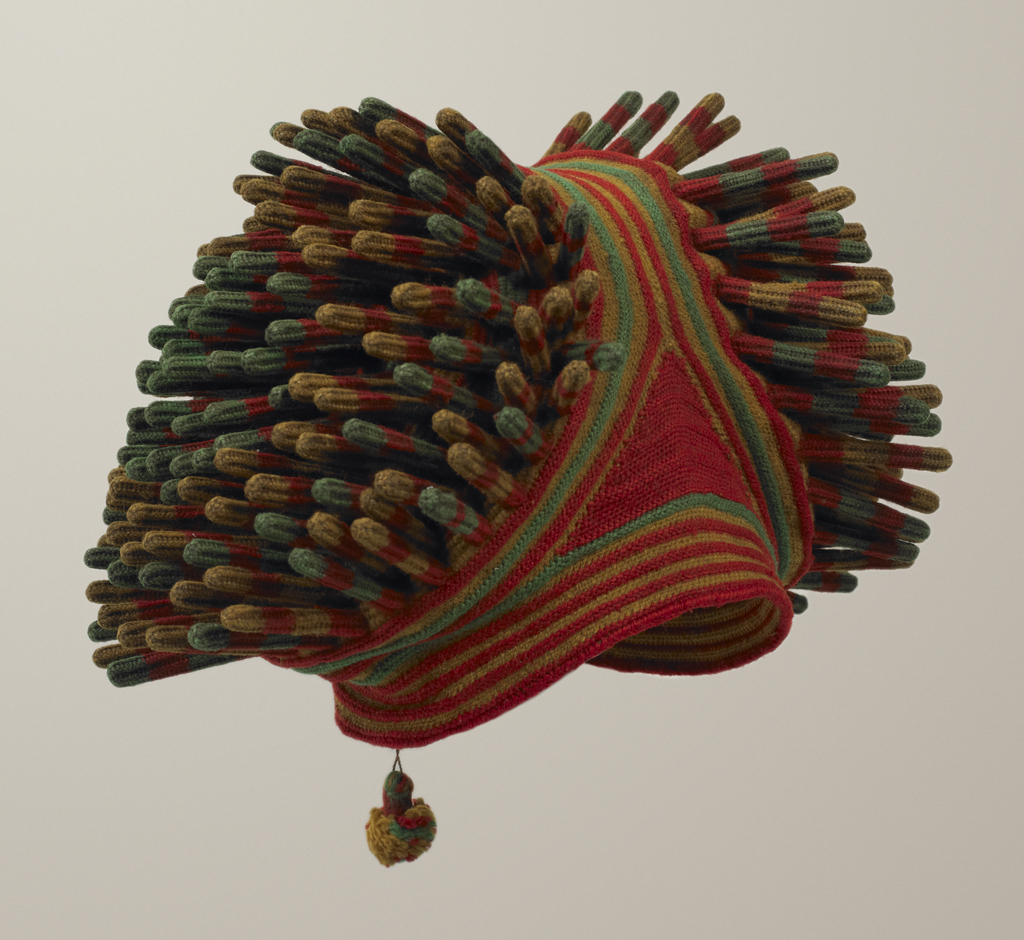September is New York Textile Month, a citywide celebration of textile creativity. As in past years, the museum is collaborating with the Textile Society of America. A non-profit professional organization of scholars, educators, and artists in the field of textiles, TSA provides an international forum for the exchange and dissemination of information about textiles worldwide....
Known for her bold engagement with popular culture and mass communication, American conceptual artist Barbara Kruger provokes and entices the viewer with her cover design for the May 1992 issue of Esquire. Featuring a close-up, black and white photograph of the controversial shock-jock Howard Stern, the superimposed text obscures significant portions of his face, excluding...
During the nineteenth century, many European nations endeavored to define their cultural identities and to establish national histories. This romantic nationalism was characterized by a nostalgia that fueled an interest in historic folk customs. Peasants were commonly viewed as synonymous with nationhood and peasant costumes were the subject of interest and national pride. This fan,...
A married woman must wear a head wrap, or gèlè, in order to feel fully and properly dressed. The manner in which she wraps her gèlè is a personal creative expression. With each wearing, the seven-foot length of cloth is folded, pleated, pinched, tucked, and spread into a new form. Re-tying the wrap each time...
The simple name “mud cloth” scarcely does justice to the mastery of chemistry needed for the multi-step production of these dyed cloths. The deep brown color is created using iron-rich mud, fermented for over a year. But the fabric must be pre-treated before to allow the mud to function as a dye, and the motifs...
The spiky projections on each side of the ashetu hat reflect the tufted hairstyles once worn by high-ranking men, frequently represented in sculpture. They can also be interpreted as physical manifestations of the inner head, considered to be the center of intelligence and spirituality. The ashetu hat is worn by the Fon or king, at...
If you think pompoms are whimsical, think again. This photograph, from the remarkable Eliot Elisofon Photographic Archives at the National Museum of African Art, shows titled soldiers known as iyol, who have earned the exclusive right to wear pompoms on their hats. [1] Elisofon, the famously colorful American photojournalist and filmmaker, traveled extensively around Africa...
Kente cloth is recognized around the world as a symbol of African identity and pride. But these colorful and majestic cloths were originally worn exclusively by members of the powerful ruling court of the Asante. A large community of artisans work in the village of Bonwire in the service of the royals to create the...
When did you first see the Alitalia livery? It was designed by Walter Landor in 1967, working from his original headquarters, a retired ferryboat moored in San Francisco called The Klamath. He had already gained a strong reputation for original ideas about designing brands with just the right visual qualities, and his persuasive pitch gained...








